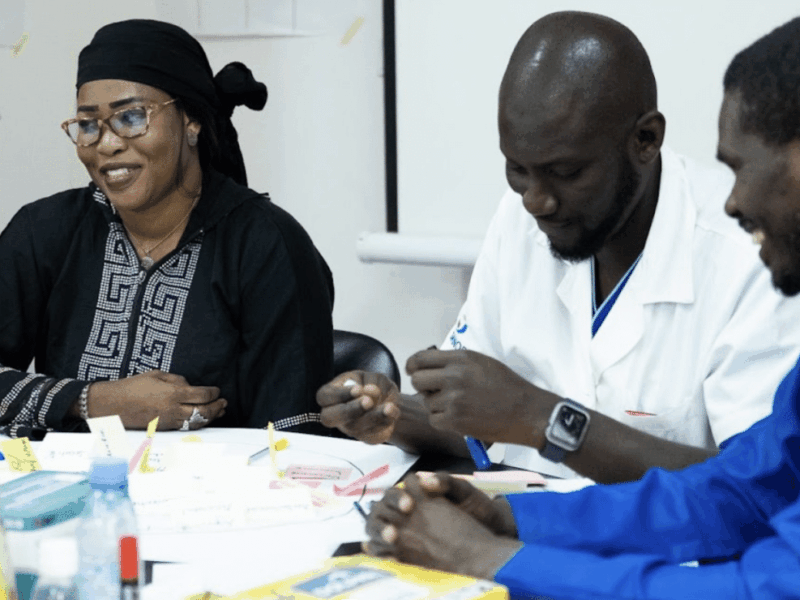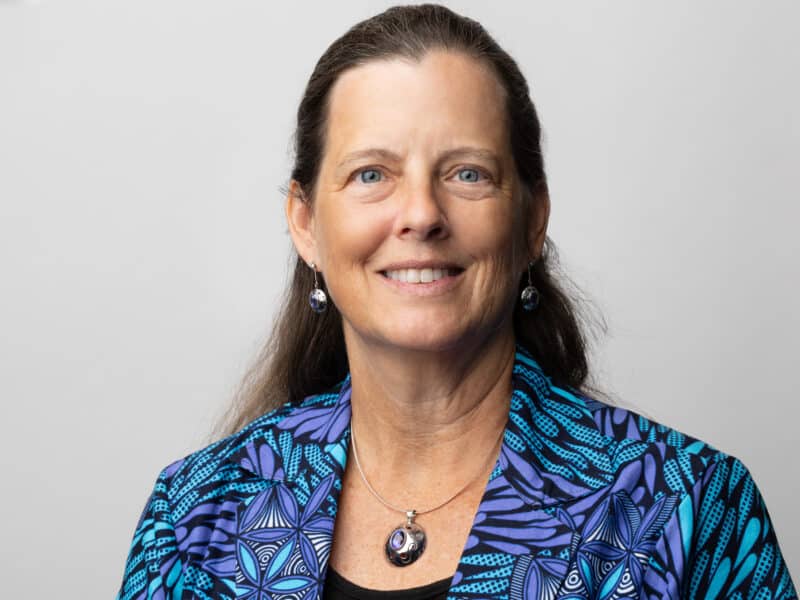During the COVID-19 pandemic, effective messaging and communication have been powerful resources to combat the virus. Effective communication encourages the positive behaviors essential to limiting spread of the virus, but many communication efforts have been marred by shifting guidelines and mixed messaging. To better understand the role of effective communication in stopping the spread of the novel coronavirus, we reached out to Uttara Bharath Kumar, senior technical advisor for social and behavior change at the Johns Hopkins Center for Communication Programs, home to the COVID-19 Communication Network.
What lessons can the general public learn about effective ways of talking about COVID-19?
Uttara: For anyone trying to communicate effectively, it’s important to communicate strategically. Being a strategic communicator means tailoring each message and its information to the needs of the people or audience hearing it. This means really taking the time to understand and empathize with your audience, even if you may not agree with them. Not everyone will need the same type of messaging around a subject, particularly one that has become as polarizing as the coronavirus. For example, the reasons someone might not have the knowledge to take preventative measures against the virus, compared to those who refuse to because they don’t believe the virus is a real threat, are different, so each would need to receive customized messages. This understanding of audience-specific, individual and social barriers is really important, and our work at CCP puts great emphasis on that. Generally, messaging around COVID-19 has tended towards one size fits all, across the board.
The pandemic has also asked the population for a big change in behavior over a short timeline. It has caused people to change their way of life very quickly by broadly limiting economic and leisure activities. For other diseases, we’ve only tasked select groups with avoiding certain environmental risks or risky behaviors. Now we’re asking everyone to make those changes, and keeping the scale of that ask in mind is helpful in communicating it.
And, interestingly, our behavior is the most powerful treatment we have until there is a vaccine. If we had a high level of compliance with preventative measures, we could potentially turn the outbreak around. We see this clearly even within the United States: in the states with more masking and distancing and delayed re-openings to public places, the virus has been reduced in a much more effective way than in states with mixed messaging and shifting policies. That’s why communication is so important during this pandemic: until enough of our population has received a vaccine, our behavior has a bigger role to play than medical science.
How have uncertainties about COVID-19 impacted communication related to the pandemic?
Uttara: It has been particularly challenging to communicate around the coronavirus because there are a few aspects to this crisis that are unique. One unusual aspect is how little we knew about the virus at the start of the outbreak. Our responses to the virus haven’t required entirely new behaviors – activities like washing hands or keeping distance from someone with the virus are already well established – but since this virus is much more dangerous than the regular flu, convincing people about its severity has been a challenge.
Another unique aspect of this virus has been the constant drip of new information, and the ongoing evolution of new precautions for individuals to take. The best example is the variability in mask wearing policies: at first, the policy was that only sick people and healthcare workers should wear them, but now it’s recommended for everyone.
Our behavior is the most powerful treatment we have until there is a vaccine.
This evolution of information has made messaging very challenging, as it has made some people doubt experts and scientific institutions. That’s why it’s really important for leaders to build trust with their communities, to emphasize that they have their best interests in mind and to communicate new information as it comes forward. This includes acknowledging where they were wrong before because that was the best available information at that time.
How can people navigate many of the challenging emotions that come with talking about COVID-19?
Uttara: It’s true, there are a lot of emotions that have become tied up with COVID-19, and this virus has not been a fair or equal opportunity offender. Social, educational and economic disparities have mattered – not everyone has the same access to information, resources and support. Consider returning to work – it’s a choice for some and not for others. Similarly, keeping physical distance may not be easy when families live in crowded conditions and some of them have to take public transport, go to work and face exposure.
In this case, you want to make sure people don’t feel fearful or helpless but instead feel empowered to do small but important actions. Self-efficacy – the feeling that, “I’m responsible for me and I can do this!” – is critical. It’s the understanding that, if each one of us does what we can, we can protect our community. So, you can empower people by telling them that, “if you have to go back to work, this is what you need to do to stay safe.” But there’s also a balance between empowerment and making people feel overly confident about the situation. You also want to maintain a high level of vigilance and awareness, while making others empowered to overcome the threat of the virus in their specific scenario.
The biggest issue in all of this is that people tend to make up communication strategy as they go along. But, there’s a wealth of information that’s been carefully researched and developed, including a host of tools and resources about encouraging positive behavior that people can adapt and use. As in the world of advertising, people are unlikely to practice a particular behavior – even for public health – unless they see what’s in it for them. If we can make it clear how these behaviors help them and people they care about, then it’ll be easier to help individuals make these changes and keep our communities safe.
How should parents talk with their children about returning to school and COVID-19?
Uttara: This is an area where many organizations have struggled to come up with best practices.
When communicating with children around COVID-19, we recommend acknowledging their anxieties and concerns. Part of this is balancing openness and transparency without tilting into doom and gloom. You want to empower them to continue preventative behaviors like wearing a mask and washing their hands, which will help keep everyone safe and also make school and seeing friends possible. If children are returning to school or if they are remote, it’s helpful to discuss the differences that they will experience if the school has made those differences clear already. Going over changed protocols and expectations can help ease the transition. Overall, with children the goal is to stay upbeat and highlight positives whenever possible while also communicating openly and explaining why certain steps are taking place.
Uncertainty can be harder for children than the disappointment of, say, not being able to attend school. Also, parents can work closely with schools and educational institutions to unite around one or two messages to maintain consistency to the extent possible.
We have a number of resources at the COVID-19 Communication Network, which includes a library of curated materials and resources, some of them focused on communicating with children.
How can one talk with friends or family members who may doubt the science behind the coronavirus?
Uttara: The most important thing is to remember that simple, clear messaging is a strength here. In this case, complexity can detract from the messaging goal. You also want to acknowledge that they have a different point of view. Instead of telling them they’re wrong, you might try to find compelling information that may offer them another point of view, and present it to them in a nonthreatening way. This might be straightforward messaging that highlights one or two key elements and shows simple evidence – like how hard it is to blow out a candle while wearing a mask, which shows how a mask can limit exhaled particles that spread the virus.
Be sure also to tailor your communications to the needs of the listener. Some might need data and scientific articles to be convinced of a certain aspect. For others, the questioning is tied to rights-based issues – they want the liberty to not wear a mask – and messaging in that case might focus on the role of the public good in wearing a mask to help others. When people feel they are being confronted, they tend to dig in their heels deeper and not open their minds to other points of view, but by tailoring our communication to the audience we’re talking to, and looking at their individual barriers or sticking points, we can still effectively communicate about the pandemic.
A version of this interview first appeared here.





